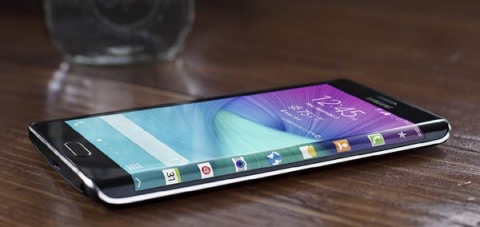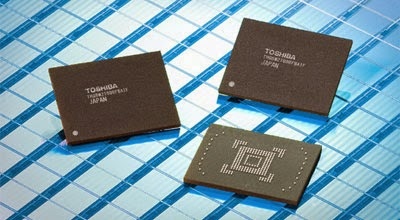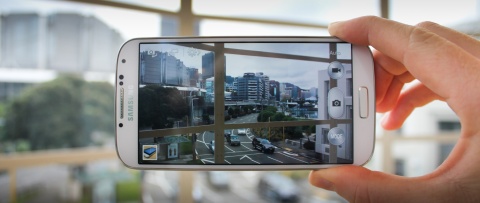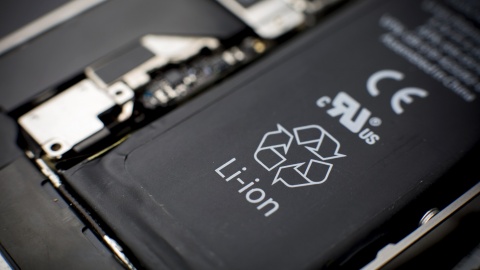-
Hemanth H Iyer
27th Apr 2016
Every “techie” who has “non-techie” friends gets asked this simple but highly loaded question – What phone would you recommend? Unfortunately, life is never black and white and especially so in today’s smartphone ecosystem. Will there ever be one perfect android smartphone to rule them all? And, we are not even talking Microsoft or Apple here!
I am sure readers would have understood my predicament by now. I get asked this question several times over and I end up coming with some gibberish in response. Ironically, what I presumed to be worthless turned out to be worthwhile for my friends, who often came back and thanked me for my ‘insight.’
And so it was, I sat down one evening, after downing a couple of single malts, to decipher what goes into a ‘perfect smartphone’. Okay! Maybe, that was the single malt speaking. For, if I had the answer to that I’d have probably approached a VC by now and gotten into start-up mode. So, I will rephrase that sentence and state that I will attempt to decipher what goes into making a ‘perfect smartphone’.
Display
Smartphones have made leaps and bounds in this department since their initial entry into our lives. These are the most common acronyms we notice when going through the spec sheet of smartphones these days. OLED / AMOLED, IPS LCD, HD, FULL HD and 4k. What are these and which of them should we opt for?

Displays by Type: OLED / AMOLED vs. IPS LCD
- OLED is a new technology for thin, efficient and bright displays. There are two types of OLEDs: Passive-Matrix (PMOLED) and Active-Matrix (AMOLED). OLEDs are made from organic light-emitting materials, and do not require any backlight and filtering systems that are used in LCDs. in AMOLED, individual pixels are lit separately (aka active matrix) on top of a thin film transistor (TFT) array that passes electricity through organic compounds (aka OLED).
- Colors are typically brighter with AMOLED, and blacks are darker because portions of the screen can be effectively turned off. This also leads to a theoretical improvement in battery life, but that depends on exactly how you're using the screen (if all the pixels are lit all the time, the inverse can be true with AMOLED being more power-hungry).
- Super AMOLED is a new form of AMOLED and is better because it integrates touch sensors in the display itself, removing the need for an extra layer and often allowing for an overall thinner device.
- In-Plane Switching Liquid Crystal Display (IPS LCD): In essence, uses polarized light which is then run through a color filter. Horizontal and vertical filters on either side of the liquid crystals control the brightness and whether or not each pixel is on or off. All the pixels are backlit to some extent while the device is on, however, even the black ones. This means contrast and blackness can suffer (if you're watching a movie set in deep space, for example). On the upside, pixels can give the impression of being packed more closely together, aiding sharpness and clarity (something Apple is very keen on). IPS LCD is often spoken of as offering more natural colors; AMOLED screens can sometimes look a little over-saturated. Viewing angles often aren't quite as good on IPS LCD as they are on AMOLED.
Displays by Resolution: 720p / 1080p / 4k
- 720p (also known as HD) is a HDTV signal format with 720 horizontal lines and an aspect ratio of 16:9. 720p format typically has a resolution of 1280×720. The number 720 stands for the 720 horizontal scan lines of image display resolution (also known as 720 pixels of vertical resolution), while the letter p stands for progressive scan (i.e. non-interlaced).
- 1080p (also known as Full HD) is a HDTV signal format with 1080 horizontal and an aspect ratio of 16:9. 1080p typically has a resolution of 1920x1080
- The name "4K resolution" refers to a horizontal resolution of approximately 4,000 pixels. The use of width to characterize the overall resolution marks a switch from previous television standards such as 720p and 1080p, which categorize media according to its vertical dimension. Using that same convention, 4K UHD would translate to 2160p.
In my opinion, the perfect display would be a 1080p AMOLED display.
Storage

[Image Credit: TechConfigurations]
- RAM: Android Operating systems are known for their multitasking abilities. For these abilities to work for you I would like my smartphone to have at least 4GB of RAM.
- ROM: Considering the “App”etite for most people these days I would like my smartphone to have at least 32GB of onboard storage aka ROM.
- Expandable: Not all of us live in places with easy access to cloud storage. That is why I think the perfect smartphone MUST have expandable storage. Ideally, up to 200GB.
Camera
When was the last time anyone packed a point and shoot camera for their trip? Smartphone manufacturers today are tying their very best to phase out point and shoot cameras, some of them even trying the audacious feat of trying to replace a DSLR.
Smartphone cameras have come a real long way in the past year. From packing the megapixels to increasing the number of lens element groups to introducing optical image stabilization to introducing laser auto focus to changing the type of flash and finally the type of post processing these smartphones do before delivering the image output to you.

Let’s take a look at a few of these “features”
- The Megapixels: This is one of those overhyped features. Unless you are going to be printing large hoardings you do not need anything more than 8 Mega Pixels. I would have liked to see HTC’s UltraPixel do much better because “in theory” it had the right intention. Most OEMs these days make cameras with a very high mega pixel count. Today’s range is from 16MP to 23MP.
- Optical Image Stabilization: An optical image stabilizer, often abbreviated OIS, IS, or OS, is a mechanism used in a camera that stabilizes the recorded image by varying the optical path to the sensor. This technology is implemented in the lens itself. The key element of all optical stabilization systems is that they stabilize the image projected on the sensor before the sensor converts the image into digital information.
- Laser Auto Focus: There is a small laser transmitter located on the back of the handset near the camera sensor. The first step involves firing out a short laser light burst, which is then reflected back off whatever you happen to be pointing the camera at. This light then travels back towards the sensor, where the software calculates the time it takes for the light to leave and return, resulting in a very accurate measurement of how far away the target object is.
- The biggest benefits to laser assisted focus come from increased speed and accuracy when focusing, especially at short distances where the beam's bounce back is more predictable. Consistent performance in darkened environments is also a big benefit, especially when compared with contrast-based focus. However, lasers are not necessarily reliable in every environment.
In my opinion, the 2 top camera phone lenses out there are the LG G4 & Samsung Galaxy S7 . I would also like to see Sony do a better job with its f2.0 23 MP lens
Audio
- Most smartphone manufacturers give equal importance to audio as they do video. In my opinion, there are two way of looking at smartphone audio, a) how the audio sounds via the headphones b) how the audio sounds from the speakers.
- OEMs like HTC and Sony give a lot of importance to the placement of their speaker grills while OEMs like LG & Samsung go for a big bang approach. HTC is famous for it legendary “Boom Sound” speakers. These are really great but how often do you really listen to songs from a smartphone’s speaker?
- LG’s G5 has introduced an interesting “add-on” module for audiophiles. Working with Bang & Olufsen, they have introduced a DAC module for enhancing sound quality for those audiophiles out there. Interestingly, this module can act as a stand-alone Digital to Analog Converter. Like playing high quality audio from a computer, tablet or other devices. And of course through the LG G5.
Battery
I am sure we have all had that moment when we run helter-skelter in search of a power outlet or a friend with a power bank. While smartphones and even smart wearables are growing ever more advanced, they are still limited by power. The battery has not advanced in decades. While chips and operating systems are becoming more efficient to save power we are still only looking at a day or less of use on a smartphone before having to recharge. We have seen a plethora of battery discoveries coming out of universities all over the world.

A new fuel cell has been developed, which could mean phones only need to charge once a week. Scientists at Pohang University of Science and Technology in South Korea have, for the first time, combined porous stainless steel with thin-film electrolyte and electrodes of minimal heat capacity. The result is a battery that is more durable and longer lasting than lithium-ion.
Scientists at MIT, working with Samsung, have discovered solid-state batteries that are better than current lithium-ion efforts. These batteries should be safer, last longer and offer more power. Current lithium-ion batteries rely on an electrolyte liquid to transport charged particles between the two electrodes. It is this liquid that can be flammable and which degrades the battery, limiting life. According to the MIT report, these new batteries could be charged for hundreds of thousands of cycles before degrading. They could also provide a 20 to 30 per cent improvement in power density, meaning that much more charge for whatever they are powering.
I would like to have a removable battery that lasts me a couple of days with average to high usage
Have I missed anything? Will we ever have that perfect smartphone? What phone would you recommend to you friends the next time they ask you? Do let me know …
The ‘Perfect’ Smartphone | TechTree.com
The ‘Perfect’ Smartphone
A quest to find out what constitutes one; and the answer is as expected – It is hardly perfect!!!
News Corner
- DRIFE Begins Operations in Namma Bengaluru
- Sevenaire launches ‘NEPTUNE’ – 24W Portable Speaker with RGB LED Lights
- Inbase launches ‘Urban Q1 Pro’ TWS Earbuds with Smart Touch control in India
- Airtel announces Rs 6000 cashback on purchase of smartphones from leading brands
- 78% of Indians are saving to spend during the festive season and 72% will splurge on gadgets & electronics
- 5 Tips For Buying A TV This Festive Season
- Facebook launches its largest creator education program in India
- 5 educational tech toys for young and aspiring engineers
- Mid-range smartphones emerge as customer favourites this festive season, reveals Amazon survey
- COLORFUL Launches Onebot M24A1 AIO PC for Professionals







TECHTREE